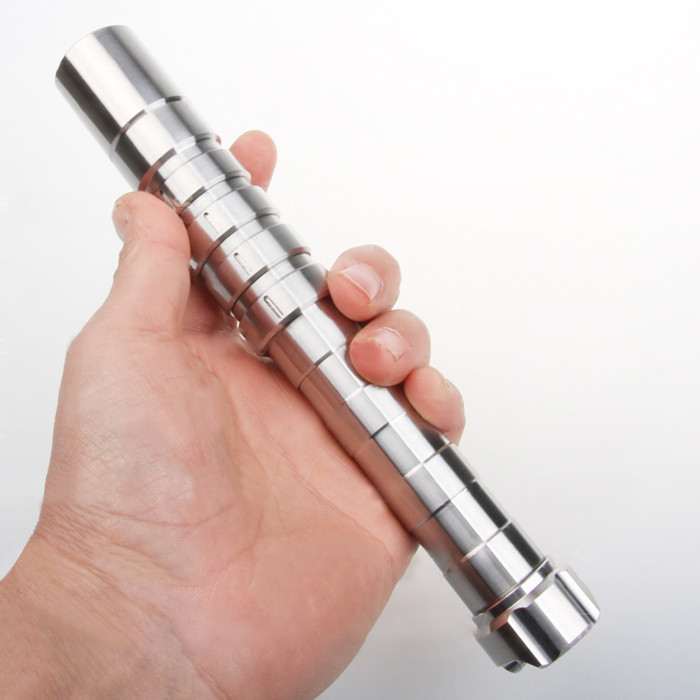Interference diffraction experiment with laser pointer from Wallis Lucy's blog
Focus adjustment: This is a good choice when you want to widen or shrink the beam. This is ideal for Burning Laser Pointers
because you can focus the beam to increase its intensity or use it for
applications such as goose control to widen the beam. In optics
teaching, the advantages of using a laser pointer as a light source are
that it is light and portable. The pen can be moved arbitrarily in the
hand, which is very convenient. Because of the high power density of the
laser, the thin beam and the small divergence angle, the energy of the
laser beam is highly concentrated and the brightness Very high, the only
thing to be solved in the geometrical optics demonstration experiment
is the optical path display problem. Due to the good directionality of
the laser, in pure media such as air, water, and glass, we can only see
the spot where it is irradiated, but the light path cannot be seen.
Using light scattering, this problem is extremely easy to solve: when
demonstrating the linear propagation of light, the reflection of light
and the deflection of light after prisms and lenses, it is only
necessary to spray smoke at the light path (lighting incense).
Smoke, mosquito coils, etc.), the light path is clearly displayed.
The Laser Pointer can also magnify the display of some small changes in the demonstration experiment of mechanics and thermodynamics, such as the small deformation of the demonstration object, the small change of the pressure, the small vibration, thermal expansion and contraction, etc. which are not easy to be observed by the naked eye. Phenomenon, the tail of the laser pointer can be used as a fulcrum, and the tip of the pen is closely connected to the changing area. In physics teaching, the light source of the existing optical demonstration experiment is not satisfactory: large, heavy, and difficult to adjust; although the output power is large, the utilization rate of light energy is not high; the adjusted beam is coarse, divergent, and not bright enough. You must be in a dark room to see clearly. Due to the scattered light, when demonstrating reflection and refraction phenomena, the quantitative value of angle (incident angle, reflection angle, refraction angle) cannot be accurately seen on the optical disc.
The single-hole diffraction experiment can also be done with a laser pointer 5000mw:
Punch a small hole in the center of the paper cut above, the hole
should be smaller, and the paper should be pre-dipped in oil or cut into
paper with opaque wax paper. After the hole is punched, there will be
no small fibers in the hole. Similarly, stick the paper sheet in front
of the lens of the pen head, screw on the pen head cover, and open the
switch, you can see that the light spot is larger in the dark place than
when the paper sheet is not added, and the light spot is larger.
The spots are composed of concentric circles of light and dark.


The Wall